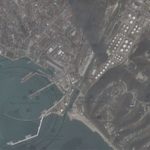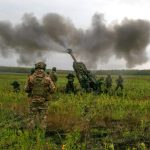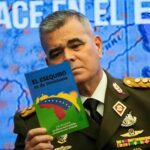Context
The following is a risk assessment regarding recent intelligence reports of Russian activity in Syria. Apart from advising and weapon supply, this includes capacity building and asset deployment. In the eve of a re-emergence of Russia’s willingness to intervene in the Middle East, in this content we will prospect what implication could that have on the New Middle Eastern Order, but also possible and immediate tactical and operational effects.
A soviet heritage of dictatorial sympathetic foreign policy.
The intervention is not a counter-terrorism manifesto, but rather a renewal of the Soviet Union era foreign policy, of Russian support for dictatorships in exchange of military accommodations or other strategic gifts: could include contracts; economic features or energy exclusivity for exploitation. In this case, most of the mentioned criteria are under way. Syria is a relic of the soft power that the USSR managed to project in the region.
Vladimir Putin and his Syrian counterpart Bashar Assad smile as they shake hands in Moscow’s Kremlin. (AP photo/RIA Novosti, Mikhail Klimentyev, Presidential Press service, file)
Support for the Assad dynasty is as blind as Bashar’s coming to power is. Hi’s brother, Basil, was initially intended to take Hafeez’s Al-Assad throne; Bashar’s faith was to become a doctor. The only reason that the outcome is so different is due to Basil’s death in a car accident in 1994. Hafeez was forced to let his other son come to power- so the emergence of Bashar Al-Assad began. The opportunistic situation was only complemented by his adventurous action of hosting the PKK’s command and officers during the final years of their terror war against Turkey. In many ways, that was a marking moment in the Syrian-Turkish relations that caused Ankara to see Assad as their solemn enemy. The same reason fuels the considerations that if the Governmental Loyalist Forces remain in power, state-sponsored terrorism (PKK) against Turkey is a guarantee.
How did we get here: the Arab Spring, the War and the Spillover.
Assad’s stubbornness during the 2012’s Arab Spring protests was only complimented by his violent and desperate reaction in order to remain in power. The use of chemical gas weapons, which ultimately fell into the hands of ISIS, and the use of barrel bombs against his own population, was a decisive factor that contributed to the radicalization of his people. These things fueled the emergence of ISIS, Jabbat Al-Nusra, Anhar al-Sham and other radical groups. While moderate factions were much more poorly armed and funded, so more vulnerable to Governmental attacks, ISIS and other factions were of course, better in every logistical way. Recruits preferred factions that were better armed and equipped even if their political orientation was jihadi or Salafists.
Even if the Opposition forces are different in almost every way, they do have a common ground- toppling Assad from power. While the successful and publicized Kurdish fighters are not unanimously against him, and have not engaged against Assad’s forces. The privileged relationship between Damascus and Rojava is reflected by the grant of Kurdish autonomous status for years. In time, the war spilled over other regional states, and because nothing was being precisely done, Syrians, Iraqi’s, Afghans decided to flee into Europe.
Both Assad and ISIS need to go.
The spillover of the Syrian Civil War in Lebanon, Iraq, Jordan and ultimately Turkey, didn’t make Assad nor Russia to accept an UN mandate to resolve the Syrian Conflict. If Russia really wanted to remediate the situation, it wouldn’t have vetoed the resolutions discussed at the United Nations.
It is also mandatory to acknowledge that the Syrian Civil War isn’t primary a fight against ISIS, because for most of the groups, that is a secondary objective. The Syrian Civil War struggle is to destroy Assad’s forces, get rid of him, and pave way for a new Syrian State. In order for that to happen, Assad needs to go, and ISIS eliminated. And because you can’t take one out without indirectly aiding the other, most of the Opposition groups fight against both, and sometimes, even against Al-Nusra. But none of them are concentrating exclusively against ISIS – that’s one of the reasons that cause the Training and Equip Program to fail. The Pentagon didn’t find more than 50 people that were willing to fight only against ISIS, and not against Assad. The will of the Syrian people couldn’t have been express better. They do not want to choose between them, they both have to go.
The Tartus Naval base.
Because it’s Russia, there always will be a military base somewhere; recently naval type. If in Crimea was the Sevastopol naval base that operationally opens the way for a permanent Russian presence in the Black Sea; In the Mideast, Moscow’s only Mediterranean base is located in Syria, and has been there since Hafez times. The exact location is in the port of the Tartus city. It’s a leased (as it was the Sevastopol base, Crimea) base from 1971 based on a Soviet-Ba’ath agreement. It’s obvious that if a regime change happens, that lease agreement will fall and Russia losses its strategic presence in the Mediterranean. The base is a Maritime-Technical Support point, and currently hosts the Amur class floating workshop PM-138, capable of providing technical maintenance to Russian warships deployed in the Mediterranean- A real logistic beauty in case of a large fleet deployment, being capable of sustaining a maritime campaign in NATO’s waters.
Besides the conventional warfare importance, that base can serve as an intelligence gathering central outpost for the Kremlin; when the Syrian Civil war broke, several Russian Intelligence outposts, and also OSNAZ GRU electronic surveillance facilities (Latakia; Al-Harra), were discovered all over country- with a silenced and cautions acceptance from Assad.
Market exclusivity and other revenues.
Russia has made a substantial efforts to economically re-engage in the Middle East. Most critically, the Russians have just signed a huge $3.5 billion arms sale with Egypt. And its revenue from business with Assad on military expenditure reaches $4 billion as 2013. It’s also no coincidence that the terrorist’s weapon of choice is the AK-47. This is a century long problem and Russia shows no signs that it would want to cooperate on weapons control.
Oil and Gas, of course
Designated area of oil search conducted by the Russian state company of SoyuzNefteGaz.
The newest discoveries of gas deposits in the Mediterranean was also decisive for Putin’s decision. The new discovery made by Israel put Russian interests on high alert. Because it’s an opportunity for Europe to once again try gaining a wider independence from Russia gas. Possible Israeli exports to Europe is a direct attack on Russia’s biggest asset used to strong arm and blackmail states: Gazprom. This could also explain why the military buildup is especially on the Coastal Area of Latakia, and the renewed importance of the Mediterranean port of Tartus. For Moscow this could go just two ways: either Israel accepts working with Russia on the gas deposits they’ve found, or they won’t export at all, keeping Syria destabilized.
When it comes to oil, the Syrian government has ratified the only contract for oil exploration along the Syrian coast. The contract was won by the Russian SoyuzNefteGaz oil company, and has an estimated cost of $100 million. Also,
this is the first foreign company to obtain the right to explore and produce oil and gas in the continental shelf belonging to Syria.
Military buildup.
Russian warships, Aligator class like Korolev or Nikolay Filchenkov passed through Istanbul with visible military cargo, and its destination is clearly Syria. The Russian Tsezar Kunikov has also been spotted to be docked in Syria, also with military cargo.
- T-99 tanks and BTR’s have been photographed on Syrian soil, with Russian mechanics and soldiers wielding them.
- Su-35 fighter jets seen on the Syrian sky; it’s important to notice that the Su-35 is regularly seen as a dog fight jet of choice. It’s presence could be a deterrence towards possible Turkish endeavors into the North.
- A high presence of military advisers justified by Lavrov as being there to only assist and ensure the proper use of equipment or guidance in this matter. But recent reports say that Russian regular troops are also fighting alongside Assad’s forces.
- Surveillance and attack drones.
- Hundreds of Russian expeditionary marines.
Founder of T-Intelligence. OSINT analyst & instructor, with experience in defense intelligence (private sector), armed conflicts, and geopolitical flashpoints.





